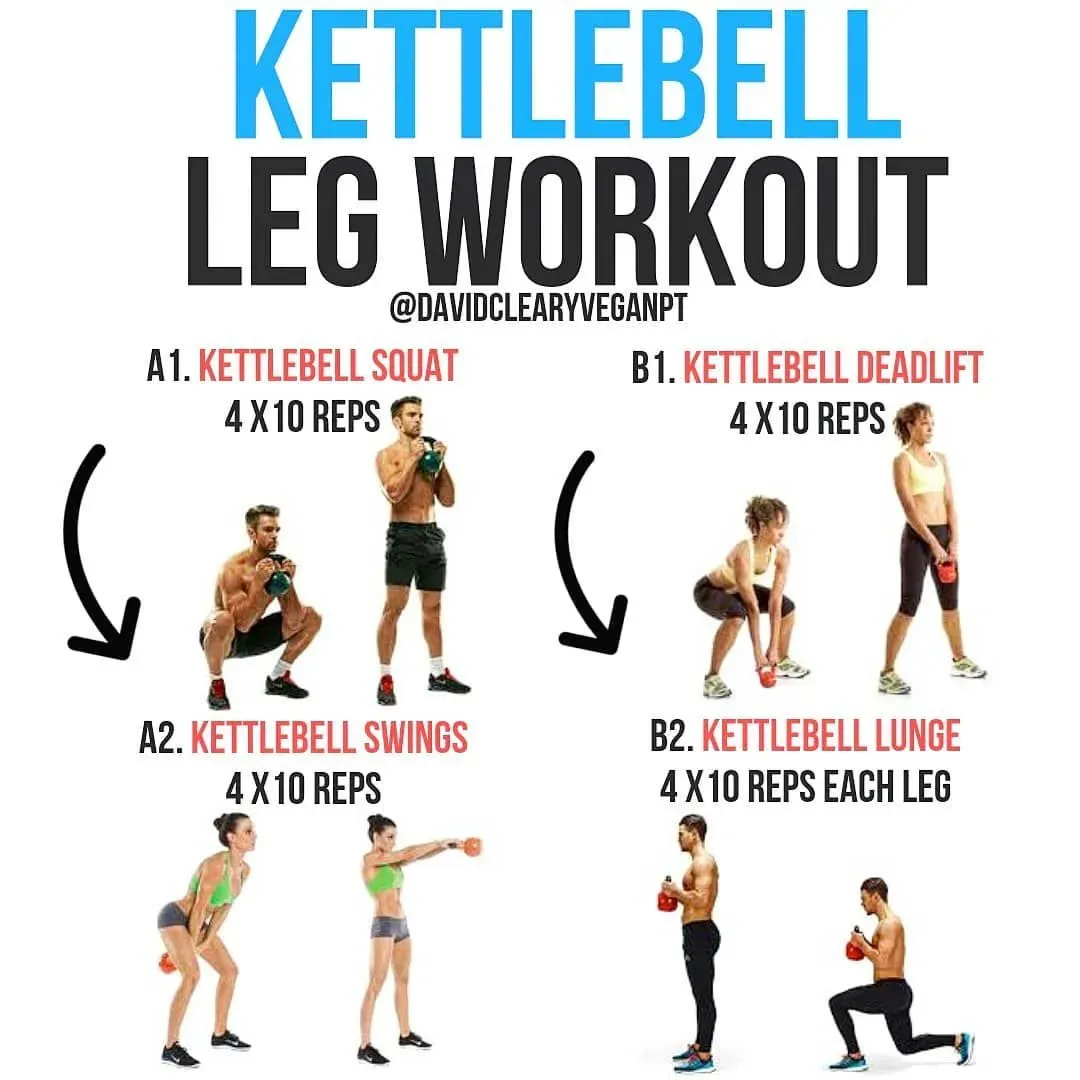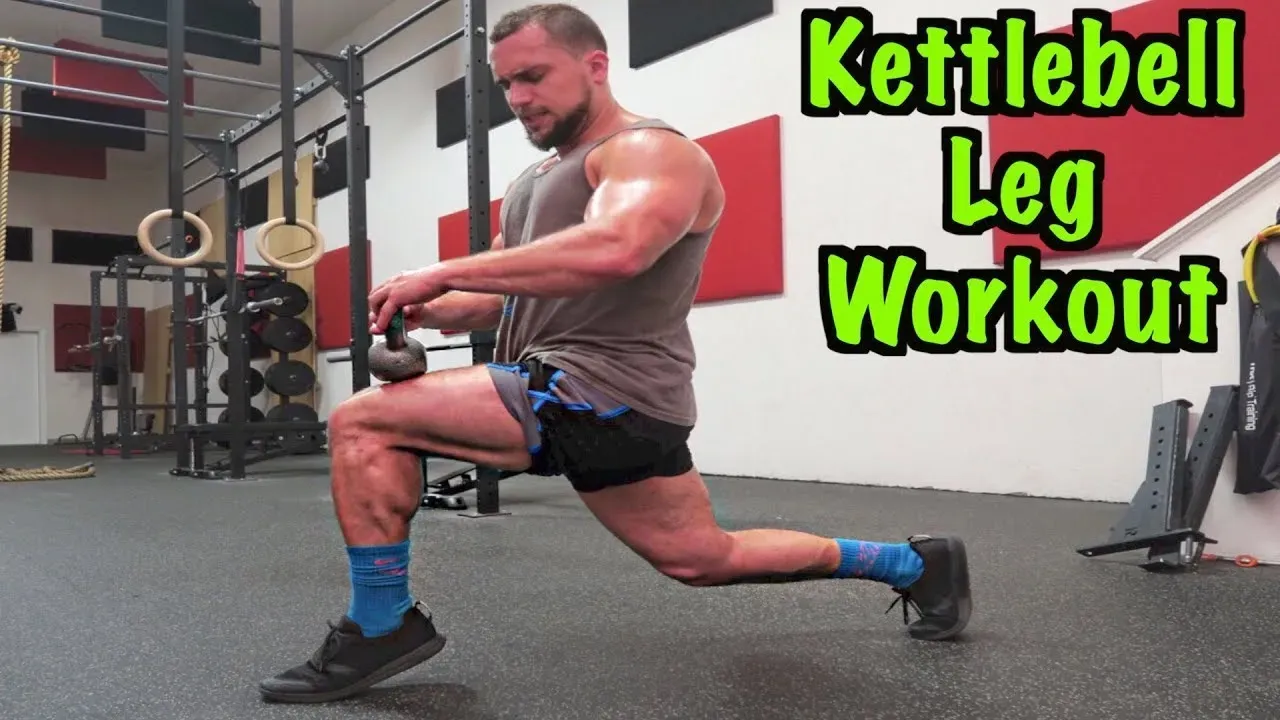Table of Contents
Let's be honest, leg day often gets a bad rap. Maybe you've crammed yourself into a leg press machine or stumbled off a treadmill feeling more defeated than powerful. Building a strong lower body is crucial, though. It supports everything you do, from walking up stairs without sounding like a freight train to generating power for sports or just picking up your kid. If you’re looking to ditch the typical gym grind and build serious leg strength, mobility, and endurance, the kettlebell is your new best friend. Forget the endless sets on clunky machines. A focusedmen's kettlebell leg workoutcan challenge your muscles in unique ways, hitting everything from your glutes and hamstrings to your quads and even your core.
Why Your Legs Crave a Serious Kettlebell Workout

Why Your Legs Crave a Serious Kettlebell Workout
More Than Just Muscle: The Real Benefits
Look, building big legs isn't just about filling out your jeans. Your legs are your foundation. They power every step, every jump, every time you stand up. Neglecting them means you're leaving a huge chunk of potential on the table. A seriousmen's kettlebell leg workoutdoes more than just build muscle; it torches calories, improves your overall strength, and makes everyday movements feel easier. Think about it: a heavy kettlebell forces your entire body to work together, stabilizing and moving as a unit. That translates directly to real-world functional strength, not just show muscle.
Finding Balance: Quads and Hamstrings
You see guys at the gym pounding the leg extension machine non-stop, completely ignoring the back of their legs. Big mistake. Your legs are essentially two main parts: the quads on the front and the hamstrings on the back. Both need attention. Strengthening the hamstrings is absolutely critical. They work in tandem with your glutes to power hip extension, which is vital for everything from deadlifts to sprinting. An imbalance here is a recipe for pain and injury down the road.
- Stronger hamstrings prevent knee issues.
- Balanced legs improve athletic performance.
- Working both sides boosts overall power output.
Injury Proofing Your Movement
Let's talk about staying healthy. Weak legs, especially weak hamstrings and glutes, put undue stress on your lower back and knees. By incorporating kettlebell exercises that challenge your stability and control, like single-leg variations, you build resilience in the joints and surrounding tissues. It’s like giving your body armor. You're not just moving weight; you're teaching your body to move *well* under load, drastically reducing the risk of those annoying tweaks and strains that sideline you.
Mastering Essential Kettlebell Leg Exercises for Men

Mastering Essential Kettlebell Leg Exercises for Men
Alright, so you're convinced your legs need more than just the standard machine circuit. Good. The kettlebell offers a dynamic way to build lower body strength, hitting muscles from angles that barbells and dumbbells sometimes miss. But where do you start? You don't need to know a hundred exercises. Focusing on the fundamental movements that provide the biggest bang for your buck is key. We're talking about swings, squats, lunges, and deadlift variations – the bread and butter that will build a solid foundation for anymen's kettlebell leg workout.
Kettlebell Exercises for the Hamstrings
Let's hit the back of those legs first. The hamstrings are often the weak link, and strengthening them is non-negotiable for overall leg health and power. Forget the leg curl machine; kettlebells force your hamstrings to work as part of a chain, connecting your hips and lower back. These movements are about hinging, not just bending.
The kettlebell swing is king here. It's a ballistic hip hinge that hammers the posterior chain – glutes and hamstrings working together. It's power, it's conditioning, it's fundamental. Then there's the Single Arm Deadlift, which introduces an anti-rotation element, forcing your core to stabilize as you lift. It feels different than a barbell deadlift, often highlighting imbalances you didn't know you had. The Single Leg Deadlift takes stability to another level, demanding serious balance and unilateral hamstring strength. It’s humbling, but effective.
Don't overlook the Good Morning. Holding the kettlebell in various positions (front rack, goblet, or even behind the neck) and hinging at the hip targets the hamstrings and lower back directly. Finally, the Windmill, while often seen as a shoulder mobility exercise, is fantastic for hamstring flexibility and oblique strength, especially the loaded variations where you hold a kettlebell overhead or in the rack position while hinging and rotating.
Hamstring Exercise | Primary Focus | Key Benefit |
|---|---|---|
Two Handed Swing | Hip Hinge Power | Explosive Strength, Conditioning |
Single Arm Deadlift | Hamstring Strength, Core Stability | Addresses Imbalances |
Single Leg Deadlift | Unilateral Strength, Balance | Improves Stability |
Good Morning | Hamstring & Lower Back Strength | Direct Posterior Chain Work |
Windmill | Hamstring Flexibility, Oblique Strength | Mobility and Stability |
Kettlebell Exercises for the Quadriceps
Now for the front. While squats are the obvious choice, the kettlebell adds unique challenges and benefits. The Goblet Squat is arguably the best place to start for learning proper squat mechanics. Holding the weight at your chest acts as a counterbalance, allowing you to sit deeper and maintain a more upright torso. It’s fantastic for mobility and building foundational quad strength.
Once you've got the goblet squat down, move to the Racked Squat. Holding one or two kettlebells in the rack position (resting on your forearms against your chest) is a completely different beast. It taxes your core and upper back significantly and forces you to stay tight throughout the movement. Lunges are also essential. The Racked Reverse Lunge, in particular, is easier on the knees for many people and still builds serious single-leg quad strength and balance.
Other quad-focused moves like the Bob and Weave (a dynamic side-to-side squat movement) build lateral strength and agility. Side Lunges hit the inner and outer thigh muscles along with the quads. And if you're feeling ambitious, the Pistol Squat with a kettlebell counterbalance is the ultimate test of unilateral leg strength, mobility, and control.
As my old coach used to say, "If you can't squat well, you can't do much else well." The kettlebell helps you train that fundamental pattern effectively.
Full Body Kettlebell Exercises for Legs
This is where the kettlebell truly shines. Many ballistic and grind movements integrate the legs seamlessly with the upper body and core, creating powerful, efficient movement patterns. The Clean & Press, for instance, starts with a hip hinge and pull (legs and hips) transitions to a rack position (core and upper back) and finishes with an overhead press (shoulders, triceps, and core again). Your legs are integral to the initial force generation.
The Thruster is a brutal but effective exercise that combines a front squat with an overhead press. Your legs drive the weight up, and that momentum helps you press it overhead. It’s a fantastic metabolic conditioner and builds explosive power from the ground up. The Lunge and Press combines a lunge with an overhead press, challenging your balance and coordination while working your legs, core, and shoulders simultaneously. And of course, the Snatch – the most technical of the ballistic lifts – requires a powerful leg drive to get the bell overhead in one fluid motion.
Double Kettlebell Leg Exercises
When you're ready to ramp things up, training with two kettlebells adds significant load and complexity. Double Single Leg Deadlifts, while incredibly challenging, double the unilateral hamstring and balance work. Double Lunges simply increase the load on a foundational movement pattern. The Double Clean involves cleaning two bells to the rack position, demanding more power and core strength than a single clean.
Double Kettlebell Squat and Press (the double thruster) is a full-body grinder that builds immense strength and endurance. And Double Alternating Cleans challenge your rhythm and coordination, forcing each side of your body to work independently and then together. These aren't for beginners, but they offer a serious progression for yourmen's kettlebell leg workout.
Crafting Your Men's Kettlebell Leg Workout Routine

Crafting Your Men's Kettlebell Leg Workout Routine
Alright, you've got the exercises. Now how do you put them together into something that actually works? Just randomly doing swings and squats won't cut it. A solidmen's kettlebell leg workoutneeds structure. You can't just hammer your quads every day or only focus on the posterior chain. Think about balancing those hamstring-focused hip hinges with the quad-dominant squat and lunge patterns. And don't forget the full-body movers; they tie everything together and build conditioning. How often should you train legs? It depends on your goals and recovery, but hitting them hard two or three times a week with adequate rest in between is a common and effective approach for many guys. Listen to your body, though; pushing through sharp pain is stupid, not tough.
- Balance hamstring and quad exercises.
- Include full-body kettlebell movements.
- Consider training legs 2-3 times per week.
- Prioritize recovery and listen to your body's signals.
Taking Your Men's Kettlebell Leg Workout Further: Full Body & Double Kettlebells

Taking Your Men's Kettlebell Leg Workout Further: Full Body & Double Kettlebells
so you've built a solid base with the fundamental single-kettlebell leg movements. You're swinging with power, squatting deep, and lunging with control. What's next when you want to push yourmen's kettlebell leg workoutbeyond the basics? This is where things get interesting – and significantly more challenging. We're talking about integrating complex full-body lifts that demand serious coordination and endurance, and then stepping into the world of double kettlebells, which simply multiplies the load and taxes your system in entirely new ways. This isn't just about adding weight; it's about increasing complexity, demanding more from your core, and forcing your body to work harder as a single, powerful unit.
Building a Stronger Foundation
So there you have it. Ditching the isolation machines for a well-structured men's kettlebell leg workout isn't just a different way to train; it's often a more effective one. Kettlebells force your body to work as a unit, demanding stability and control that translates far beyond the gym floor. You've got the tools now – exercises targeting hamstrings, quads, and integrating the whole system with full-body movements. It's not about chasing abstract numbers on a machine; it's about building functional strength that makes you more capable. Pick up the bell, put in the work, and see what your legs are actually capable of.